Coût d'une greffe de cheveux aux États-Unis : 7 astuces essentielles pour économiser et renforcer votre confiance en vous
- Maison
- »
- Esthétique dentaire
- »
- Le guide ultime des offres groupées d'implants dentaires pour toute la bouche en Turquie
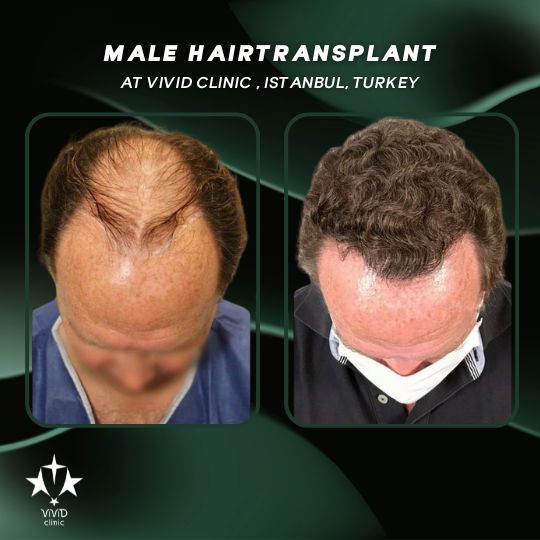
Introduction aux coûts de la greffe de cheveux en Amérique
Lorsque l’on envisage une restauration capillaire, l’une des premières préoccupations qui vient probablement à l’esprit est la coût de la greffe de cheveux en AmériqueLe prix peut varier considérablement, en fonction de facteurs tels que l'expertise du chirurgien, la situation géographique de la clinique et la technique choisie. Il est important de comprendre ces variables de coût, car vous n'investissez pas seulement dans une intervention : vous investissez dans votre confiance, votre apparence et votre qualité de vie.
Dans un monde où l'apparence influence les opportunités personnelles et professionnelles, la greffe de cheveux offre une chance de regagner ce que le temps ou la génétique ont emporté. Fort de vos connaissances, vous pourrez vous orienter dans le paysage américain de la greffe de cheveux et trouver une solution adaptée à votre budget et au résultat souhaité.
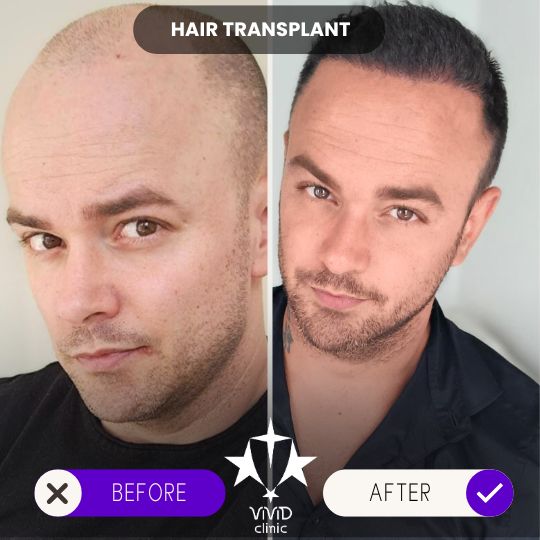
Décomposition Méthodes de greffe de cheveux et leurs coûts
La greffe de cheveux n’est pas un service universel ; il existe plusieurs approches, chacune ayant un impact sur la facture finale.
FUT (Transplantation d'unités folliculaires) :
Méthode plus traditionnelle, la FUT consiste à prélever une bandelette de cuir chevelu de la zone donneuse et à la disséquer pour obtenir des greffons. Bien qu'elle puisse produire un grand nombre de greffons en une seule séance, son coût global par greffon est souvent légèrement inférieur à celui des techniques plus récentes. Cela rend la FUT intéressante pour ceux qui recherchent une couverture étendue. Cependant, la présence d'une cicatrice linéaire peut influencer le choix de la coiffure à long terme.
FUE (Extraction d'Unités Folliculaires) :
La FUE est devenue extrêmement populaire grâce à son caractère mini-invasif. Les follicules sont extraits individuellement, ce qui réduit les cicatrices visibles. Cette attention particulière et le temps supplémentaire consacré peuvent augmenter le prix. coût de la greffe de cheveux En Amérique, le coût peut être plus élevé que celui du FUT, mais de nombreux patients apprécient les cicatrices discrètes et la flexibilité de la coiffure.
DHI (Implantation Directe de Cheveux) :
La DHI pousse la précision à un niveau supérieur en implantant les follicules directement dans le cuir chevelu à l'aide d'un outil spécialisé, contrôlant l'angle, la direction et la profondeur. Cette approche méticuleuse est souvent plus onéreuse. Les patients qui optent pour la DHI apprécient le contrôle accru et des résultats potentiellement plus naturels, ce qui justifie le coût supplémentaire.
Greffes de cheveux robotisées :
Certaines cliniques utilisent des systèmes robotisés pour faciliter le prélèvement des greffons. Si cette avancée technologique peut améliorer la précision et la rapidité, elle augmente souvent le coût global. La maintenance de la machine, la formation spécialisée du personnel et son caractère avant-gardiste justifient ce prix plus élevé. Les patients séduits par cette option apprécient la régularité et la réduction des erreurs humaines.
Techniques supplémentaires et leur impact sur le prix :
Certaines innovations comme la Technique FUE Saphir La FUE sans rasage peut légèrement augmenter les coûts en raison d'outils spécialisés ou de délais d'intervention plus longs. Les implants synthétiques, bien que moins courants, peuvent également influencer les prix car ils nécessitent un entretien régulier.
Différences régionales en Amérique
Le coût de la greffe de cheveux en Amérique Cela est souvent lié à la situation géographique. Dans les grandes métropoles comme New York ou Los Angeles, le coût de la vie est généralement plus élevé, ce qui se traduit par des interventions plus coûteuses. Les cliniques haut de gamme de ces centres s'adressent à une clientèle en quête de services haut de gamme et de technologies de pointe.
Dans les petites villes, vous trouverez peut-être des tarifs plus abordables. Cependant, il est important de trouver un juste équilibre entre coût et expertise. Même si un prix plus bas peut être intéressant, assurez-vous que la clinique et les qualifications du chirurgien répondent à vos attentes. Consulter un chirurgien réputé dans une autre région (voire un autre pays) offre parfois un meilleur rapport qualité-prix.
Facteurs influençant le coût d'une greffe de cheveux aux États-Unis
Plusieurs éléments clés influencent le montant que vous paierez :
Expertise et réputation du chirurgien :
Les chirurgiens hautement expérimentés, dont les résultats sont prouvés depuis des années, pratiquent des honoraires plus élevés. Leurs antécédents, leur spécialisation et les témoignages de leurs patients justifient des tarifs plus élevés.
Technologie et équipement de la clinique :
Un établissement de pointe qui investit dans les dernières technologies, les systèmes robotisés et les outils de pointe facturera probablement plus cher. Mais ces innovations se traduisent souvent par une précision et un confort accrus.
Nombre de greffons requis :
Plus le nombre de greffons nécessaires est élevé, plus le coût total est élevé. Une perte de cheveux importante, nécessitant des milliers de greffons, peut augmenter considérablement la facture. Certaines cliniques proposent des forfaits basés sur le nombre de greffons.
Complexité de la procédure :
Vos caractéristiques capillaires, l'état de votre cuir chevelu ou des interventions antérieures infructueuses peuvent compliquer l'intervention et augmenter les coûts. Un temps d'intervention plus long entraîne souvent un prix plus élevé.
Comparaison des coûts de greffe de cheveux aux États-Unis et à l'international
De nombreux Américains se tournent vers la restauration capillaire à l'étranger. Istanbul, en Turquie, est une destination de choix, réputée pour ses prix compétitifs et ses excellentes normes chirurgicales.
Pourquoi Istanbul, Turquie ?
À Istanbul, vous trouverez des cliniques avec des chirurgiens expérimentés et des installations modernes à un prix bien inférieur aux prix américains. Le taux de change favorable et la présence d'industries spécialisées du tourisme médical réduisent les prix globaux. Les patients constatent des économies, même après prise en compte des frais de déplacement et d'hébergement.
Clinique Vivid : Consultation gratuite avec un chirurgien plasticien et des soins de qualité
La clinique Vivid d'Istanbul en est un parfait exemple. Proposant une consultation gratuite de chirurgien esthétique, elle est fière de ses soins personnalisés, de ses techniques avancées et de sa réputation de résultats naturels. Même avec le billet d'avion et l'hébergement, certains patients trouvent le coût total nettement inférieur à celui d'une intervention aux États-Unis.
Coûts de déplacement vs. économies sur les procédures
Bien que voyager à l'étranger nécessite une planification, des congés et des barrières linguistiques potentielles, beaucoup trouvent les économies substantielles. Vous bénéficiez de soins de qualité, comprenant souvent des services supplémentaires comme les transferts aéroport, l'aide à l'hébergement et un suivi postopératoire guidé.
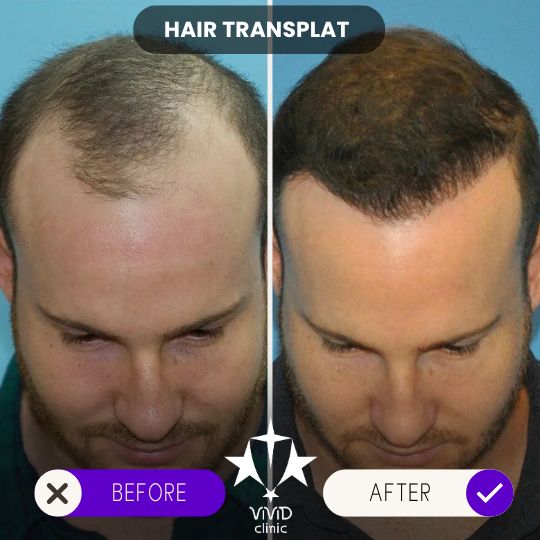
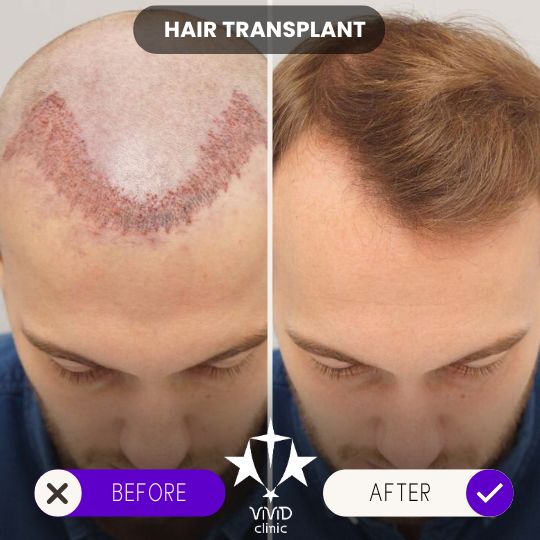
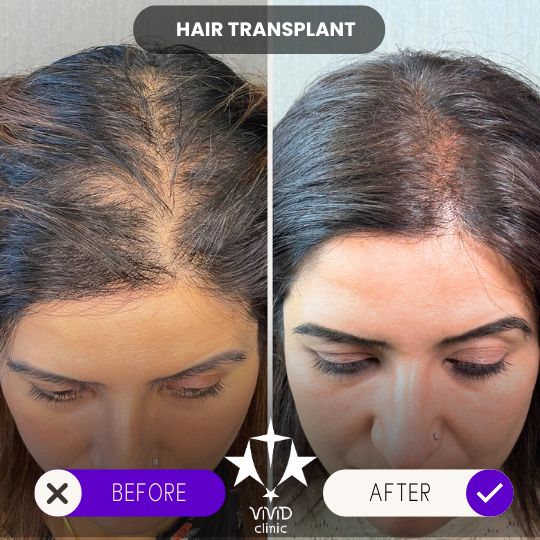
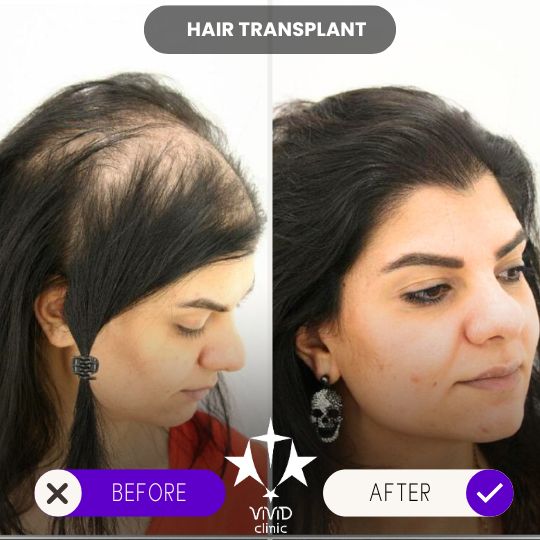
Comment se préparer financièrement à une greffe de cheveux
Avant de réserver votre intervention, établissez un budget réaliste. Renseignez-vous sur les coûts moyens de la méthode choisie, demandez des devis à plusieurs cliniques et comparez les avantages et le prix.
Options de financement :
Certaines cliniques américaines proposent des plans de paiement, des prêts ou des partenariats avec des sociétés de financement médical. Étaler le coût sur plusieurs mois peut alléger le fardeau financier et le rendre plus accessible.
Assurance et greffes de cheveux :
Dans la plupart des cas, les greffes de cheveux ne sont pas prises en charge par l'assurance maladie, car elles sont considérées comme esthétiques. Cependant, si la perte de cheveux est liée à un problème médical ou à un traumatisme, il est conseillé de vérifier auprès de votre assurance si une partie de la perte est prise en charge.
Aperçu du processus d'exploitation
Quel que soit l’endroit où vous choisissez de subir votre intervention, comprendre le processus vous donne un aperçu de ce pour quoi vous payez.
Arrivée et Consultation :
Vous rencontrerez votre chirurgien, discuterez de vos objectifs, examinerez votre zone donneuse et confirmerez le nombre de greffons. Cette consultation initiale prépare le terrain et influence souvent le coût final.
Étapes de la chirurgie : de l'extraction à l'implantation :
Sous anesthésie locale, les follicules pileux sont soigneusement extraits et implantés. La méthode choisie (FUT, FUE, DHI) influence les outils utilisés, le temps nécessaire et la facture finale.
Soins post-intervention et départ :
Après l'intervention, vous recevrez des instructions, des médicaments et, éventuellement, des rendez-vous de suivi. Un suivi postopératoire complet peut être inclus dans le forfait ou entraîner un supplément.
Coûts de rétablissement et de suivi
Les frais liés au rétablissement ne doivent pas être négligés. Bien qu'ils ne soient pas toujours inclus dans le devis initial, ils peuvent s'accumuler.
Rendez-vous de suivi et médicaments :
Certaines cliniques offrent un suivi gratuit, tandis que d'autres facturent séparément. Les médicaments destinés à prévenir l'infection, à réduire l'enflure ou à favoriser la guérison augmentent les coûts.
Shampoings spéciaux, compléments et entretien :
Les soins post-greffe peuvent inclure des shampoings, des après-shampoings ou des compléments alimentaires spécifiques pour favoriser la croissance capillaire. Les solutions topiques en vente libre et les médicaments sur ordonnance comme le finastéride ou le minoxidil représentent des coûts récurrents.
Congés et dépenses diverses :
La durée de la convalescence varie. Si vous devez prendre un congé sans solde, cela représente un coût indirect. Pensez au transport, à l'hébergement (en cas de déplacement pour une intervention chirurgicale) et aux frais accessoires.
Assurer la valeur : qualité vs coût
Si le prix est essentiel, ne le laissez pas être votre seul critère de décision. La qualité du chirurgien, le confort de l'intervention et le résultat final naturel comptent plus que quelques centaines d'euros d'économies. Après tout, vous investissez à long terme dans votre apparence et votre estime de soi.
Évitez les offres trop belles pour être vraies, car elles peuvent s'appuyer sur une technologie obsolète ou un personnel peu expérimenté. Dépenser un peu plus pour une clinique réputée peut vous éviter des corrections coûteuses ou des résultats insatisfaisants à long terme.
Tableau de présentation de la procédure
| Durée du processus | Durée d'hospitalisation | Durée de la mobilité | Durée du retour à l'activité | Durée de récupération complète | Durée des résultats attendus |
|---|---|---|---|---|---|
| 4 à 8 heures (en moyenne) | Consultation externe (sans nuitée) | Lendemain | 3 à 7 jours | 3-4 semaines | Résultats visibles en 12 à 18 mois |
Ce tableau donne un aperçu rapide de ce à quoi vous pouvez vous attendre lors de la plupart des greffes de cheveux, quelle que soit la méthode ou la localisation. Veuillez noter qu'il s'agit de moyennes et qu'elles peuvent varier en fonction des recommandations du chirurgien et de votre processus de guérison.
Idées fausses courantes sur les prix
Mythe « Cher signifie meilleur » :
Un prix élevé ne garantit pas automatiquement de meilleurs résultats. Des cliniques réputées proposant des tarifs équitables peuvent offrir d'excellents résultats. Vérifiez toujours les qualifications du chirurgien, consultez sa galerie de patients et lisez les témoignages.
Piège du « moins cher est toujours le meilleur » :
À l'inverse, opter pour l'option la moins chère pourrait entraîner des greffes de mauvaise qualité, des cicatrices visibles ou des lignes de cheveux artificielles. Trouvez le juste équilibre entre le coût, l'expertise et des résultats prouvés pour trouver le bon compromis.
Changements de style de vie pour maximiser votre investissement
Une greffe de cheveux n'est pas une solution miracle. Assurez la pérennité de votre investissement en adoptant un mode de vie sain. Adoptez une alimentation équilibrée, riche en protéines, vitamines et minéraux essentiels à la croissance des cheveux. Envisagez des compléments alimentaires comme la biotine, le fer ou le zinc si votre médecin vous le recommande. Des médicaments comme le finastéride ou le minoxidil peuvent contribuer à protéger votre investissement et à assurer la croissance des cheveux nouvellement transplantés.
Impact psychologique : justifier l'investissement
La restauration capillaire ne se limite pas à l'esthétique ; elle peut avoir un impact psychologique profond. Pour beaucoup, le coût est justifié par la confiance retrouvée, l'estime de soi améliorée et les interactions sociales améliorées qui en découlent. Se sentir bien dans sa peau peut influencer positivement et de manière inattendue sa vie personnelle, professionnelle et émotionnelle.
Conseils pour prendre une décision éclairée
Recherche:
Commencez par une recherche approfondie. Comparez plusieurs cliniques aux États-Unis, examinez leurs photos avant/après et consultez les témoignages de patients. Comprendre la moyenne coût de la greffe de cheveux en Amérique vous aide à distinguer les devis raisonnables des offres trop chères ou étrangement bon marché.
Posez les bonnes questions :
Renseignez-vous sur l'expérience du chirurgien, les techniques proposées, les cicatrices éventuelles, le nombre de greffons nécessaires et ce qui est inclus dans le prix total. Une communication transparente est la marque d'une clinique digne de confiance.
Envisagez les options internationales :
Ne limitez pas votre recherche aux cliniques locales. Renseignez-vous sur des centres internationaux réputés comme Clinique Vivid à Istanbul, où des consultations gratuites avec un chirurgien esthétique et des tarifs compétitifs peuvent offrir un meilleur rapport qualité-prix. N'oubliez pas qu'il s'agit d'un choix à long terme ; élargissez votre champ d'action pour être sûr de prendre la meilleure décision.
5 FAQ
Quel est le coût moyen d’une greffe de cheveux en Amérique ?
Le coût de la greffe de cheveux en Amérique Le prix varie généralement de 4 000 à 15 000 TP/T, voire plus, selon la clinique, l'expertise du chirurgien, le nombre de greffons et la technique choisie. Les grandes villes et les méthodes avancées comme la FUE ou la DHI sont généralement plus chères, tandis que les cliniques plus petites ou les alternatives à l'étranger peuvent être plus abordables.
Le coût de la greffe de cheveux en Amérique varie-t-il selon la région ?
Oui. Le coût de la greffe de cheveux en Amérique Les coûts varient souvent selon la localisation. Les zones métropolitaines comme New York, Los Angeles ou Miami ont tendance à être plus élevées en raison du coût de la vie élevé et d'une forte demande. Les villes plus petites peuvent offrir des options plus abordables, mais il est crucial de garantir la qualité et la réputation de la clinique.
Quel est le coût d'une greffe de cheveux en Amérique par rapport à Istanbul, en Turquie ?
Les procédures américaines sont généralement plus chères en comparaison coût de la greffe de cheveux en Amérique à Istanbul, TurquieDe nombreux patients constatent que voyager à l'étranger, notamment dans des cliniques réputées comme la Vivid Clinic à Istanbul, peut leur permettre de réaliser des économies substantielles, même en tenant compte des vols et de l'hébergement. De plus, la Vivid Clinic offre une consultation gratuite avec un chirurgien plasticien, ce qui accroît la valeur de leurs soins.
Existe-t-il des options de financement disponibles pour aider à couvrir le coût de la greffe de cheveux en Amérique ?
Oui. De nombreuses cliniques proposent des plans de financement, des prêts médicaux ou des options de paiement pour faciliter le traitement. coût de la greffe de cheveux en Amérique Plus facile à gérer. Bien que les assurances ne couvrent généralement pas les interventions esthétiques, des structures de paiement flexibles peuvent aider à étaler les dépenses sur plusieurs mois.
Comment puis-je m'assurer d'obtenir un bon rapport qualité-prix pour le coût d'une greffe de cheveux en Amérique ?
Effectuez des recherches approfondies pour vous assurer de recevoir la qualité pour le coût de la greffe de cheveux en AmériqueVérifiez les qualifications du chirurgien, lisez les avis et visualisez des photos avant/après. Tenez compte de la technologie de la clinique, du suivi postopératoire et de l'expérience globale du patient. Investir dans un chirurgien réputé et expérimenté peut coûter plus cher au départ, mais peut vous faire économiser de l'argent et vous éviter bien des soucis à long terme.
Articles récents du blog Vivid Clinic
-
 Comparaison des coûts de greffe de cheveux aux États-Unis : pourquoi Vivid Clinic offre plus pour moins cher
Comparaison des coûts de greffe de cheveux aux États-Unis : pourquoi Vivid Clinic offre plus pour moins cher -
 L'art du beau nez : un guide pour obtenir le look parfait à Istanbul
L'art du beau nez : un guide pour obtenir le look parfait à Istanbul -
 Effets secondaires à long terme de la chirurgie plastique : un guide complet sur l'avenir de votre corps
Effets secondaires à long terme de la chirurgie plastique : un guide complet sur l'avenir de votre corps -
 Effets secondaires de la chirurgie plastique sur le visage : un guide complet d'expert sur les risques et la récupération
Effets secondaires de la chirurgie plastique sur le visage : un guide complet d'expert sur les risques et la récupération -
 Effets à long terme de la liposuccion : guide complet pour des résultats durables
Effets à long terme de la liposuccion : guide complet pour des résultats durables -
 Effets secondaires de l'abdominoplastie : un guide honnête sur la récupération et les résultats à Istanbul
Effets secondaires de l'abdominoplastie : un guide honnête sur la récupération et les résultats à Istanbul
Articles les plus populaires
-
 Explorer différents types et formes de nez pour les femmes et les hommes
Explorer différents types et formes de nez pour les femmes et les hommes -
 Un guide complet sur les différents types de nez : du grec au nubien
Un guide complet sur les différents types de nez : du grec au nubien -
 Nez romain et 9 autres formes de nez expliquées : trouvez le look idéal dès aujourd'hui
Nez romain et 9 autres formes de nez expliquées : trouvez le look idéal dès aujourd'hui -
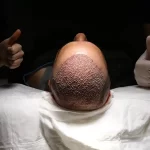 Comparaison des coûts mondiaux des greffes de cheveux (2025) : Pourquoi la Turquie reste-t-elle le pays le plus performant ?
Comparaison des coûts mondiaux des greffes de cheveux (2025) : Pourquoi la Turquie reste-t-elle le pays le plus performant ? -
 Implants mammaires ronds ou en forme de larme : guide d'expert pour choisir la forme idéale
Implants mammaires ronds ou en forme de larme : guide d'expert pour choisir la forme idéale -
 Le processus de greffe de cheveux d'Elon Musk
Le processus de greffe de cheveux d'Elon Musk

